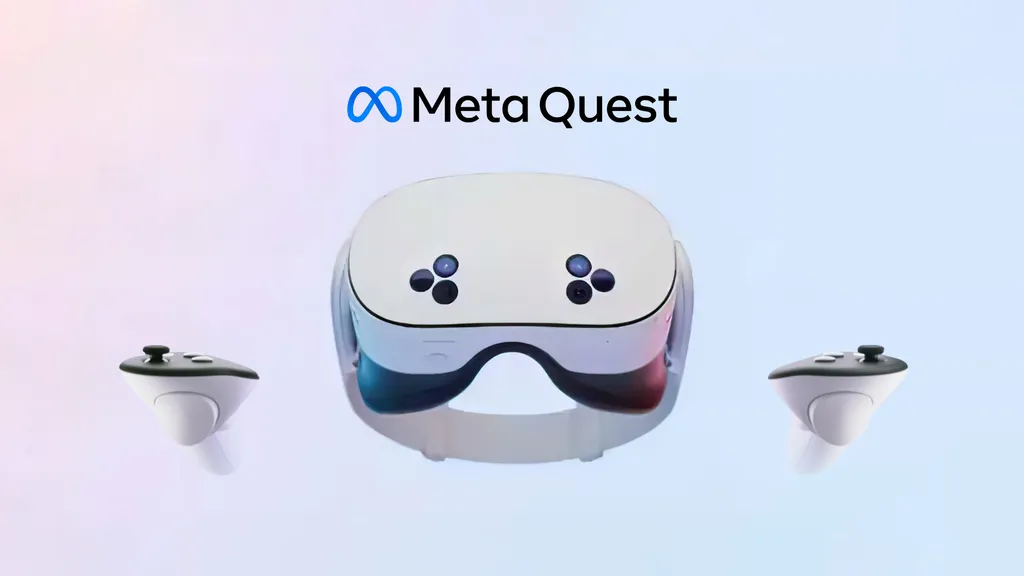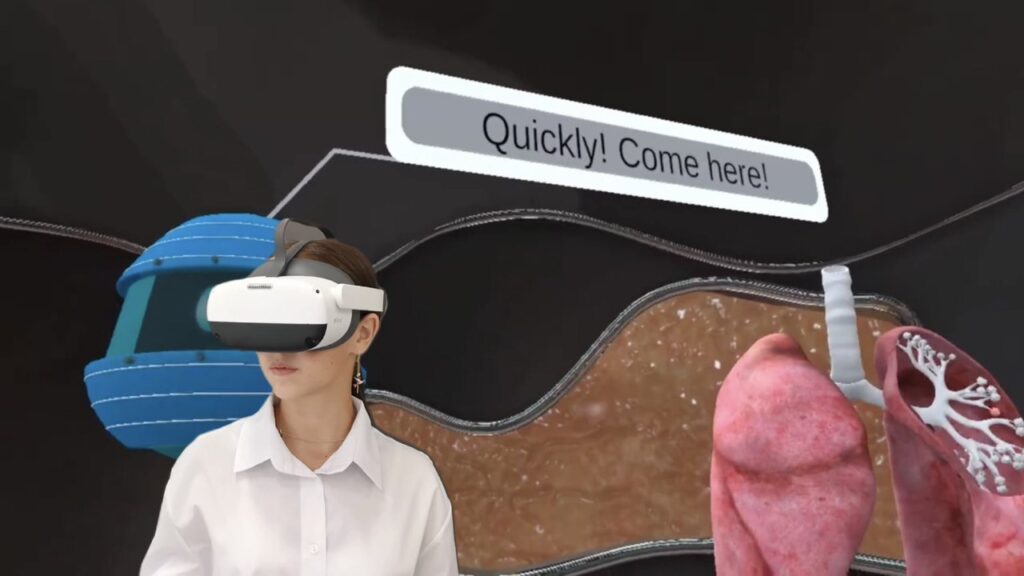Affordability of VR Glasses for Schools
The cost of VR headsets for education has dropped significantly over the past five years, making it more accessible for schools to adopt. In 2018, a high-quality VR headset could cost between $600 and $800, but now devices like the Quest 3S are available for just $299. This price drop, driven by companies like Meta lowering prices to increase adoption, allows schools to integrate VR classrooms without straining their budgets. Research shows that schools can improve engagement and retention by incorporating VR learning tools, making it a cost-effective investment for modern education.

Schools like Pioneer Middle School in Texas and King’s Academy in Jordan are already transforming their STEM labs with VR. At Pioneer, students safely conduct virtual dissections and simulate complex chemistry experiments. King’s Academy uses VR in physics classes, helping students visualize abstract concepts like electromagnetism and space travel, demonstrating how VR in education can revolutionize learning.
By investing in just 10 headsets, schools can create a VR lab where students rotate through immersive lessons, maximizing budget efficiency. This setup gives students access to experiences that would be difficult or costly in a traditional setting, such as virtual field trips and advanced science simulations.
Platforms like CoSpaces and Visible Body provide a wealth of VR educational content, compatible with the Quest 3S, allowing schools to explore a wide range of subjects, from anatomy to physics. CoSpaces lets students build their own virtual worlds, while Visible Body offers interactive 3D anatomy lessons.
At XReady Lab, we enhance the STEM curriculum by offering VR applications that align with international education standards. Our immersive experiences span molecular biology, anatomy, and physics, giving students hands-on opportunities to explore complex scientific concepts in virtual environments. Whether it’s DNA structure, human organ systems, or physics experiments in electromagnetism, our applications seamlessly integrate into classrooms, helping students worldwide engage with recognized scientific principles.
Comparing Quest 3S to Other VR Devices on the Market
When considering VR headsets for schools, the Quest 3S stands out for its affordability, versatility, and impressive technical specifications. Priced at just $299 per headset, it offers a VR classroom solution that is significantly more budget-friendly than many competing devices, such as the Pico 4 or HTC Vive. While the Pico 4 retails for around $400, and the HTC Vive starts at $599, the Quest 3S provides a more accessible option for schools looking to adopt virtual reality in education.

Tech Specs of the Quest 3S:
- Processor: Snapdragon XR2 Gen 2, providing high performance and smooth experiences even in graphically demanding STEM simulations.
- Display: Dual LCD displays with a resolution of 2064 x 2208 pixels per eye, delivering sharp and vivid visuals, essential for detailed VR learning programs like biology dissections or atomic models.
- Storage: Comes in 128GB and 256GB options, ensuring plenty of room for storing multiple educational VR applications.
- Refresh Rate: Up to 120 Hz, ensuring smooth, immersive experiences, which is crucial for long sessions of virtual reality education without causing fatigue.
- Field of View (FOV): 105 degrees, offering a broad, immersive viewing experience for students as they explore virtual STEM labs.
- Mixed Reality Support: The Quest 3S supports mixed reality (MR), allowing seamless transitions between virtual and real-world environments. For instance, students can see virtual atoms overlaid on their physical workspace or combine real lab tools with digital simulations, adding depth to interactive classroom activities.
Compared to other devices like the Pico 4, which lacks the same level of educational content and mixed reality capabilities, or the HTC Vive, which requires external sensors and more complex setup, the Quest 3S offers a hassle-free, all-in-one solution ideal for schools.
Benefits of Creating a VR Lab in Schools
The potential for VR education is vast, and by creating a VR lab with just 10 headsets, schools can revolutionize how students learn. Research has shown that virtual reality (VR) can significantly improve learning outcomes by enhancing engagement, retention, and understanding of complex subjects. A study conducted by Stanford University found that students using VR showed a 30% improvement in learning retention compared to traditional methods. VR enables learners to immerse themselves in the subject matter, improving both cognitive skills and overall academic performance.
Here are some key benefits:
- Virtual STEM Lessons: Imagine students conducting high-level experiments like mitosis and meiosis, observing gas exchange in the lungs, or understanding the structure of the eye through a fully immersive, hands-on experience. With VR, these advanced biology topics come to life in ways that textbooks and diagrams cannot replicate. For example, in a virtual lab, students can explore protein biosynthesis or simulate photosynthesis at the molecular level, gaining a deeper understanding of biological processes.
- Access to High-Level Experiments: Many schools don’t have the budget or equipment to conduct advanced STEM experiments. VR in schools allows students to perform experiments like energy metabolism, analyze the human skeleton, or even simulate embryonic development, without requiring expensive or hazardous materials. This opens up access to a level of scientific exploration that was once only possible in university-level labs.
- Hands-on Learning: VR classrooms provide students with an immersive experience, allowing them to interact with complex concepts like molecular biology or planetary motion in ways that a textbook cannot. For instance, students can visualize the intricate details of protein biosynthesis or take a virtual journey through the human body’s gas exchange system—making abstract ideas tangible and memorable.
- Real-World Application: Students can explore real-world scenarios in VR education environments, such as performing virtual dissections of the human body or simulating dangerous chemical reactions, all in a safe and controlled setting. Through virtual reality, they can engage with practical applications of STEM concepts, from examining microscopic organisms to understanding the laws of physics through virtual experimentation. VR also offers the opportunity to simulate experiments that would be too dangerous or costly to perform in a traditional classroom.
By integrating virtual reality learning tools, schools can create a dynamic learning environment that fosters curiosity, promotes deeper understanding, and prepares students for the future of STEM fields.
Efficiency of Investment: How 10 VR Headsets Can Serve an Entire Class
Investing in just 10 VR headsets can significantly impact an entire class, making it a cost-effective solution for schools. A class of 30 students can be split into groups, with each group using the headsets in rotation. This setup not only ensures that every student experiences virtual reality for learning, but also makes the investment manageable for schools with limited budgets.
Moreover, schools can apply for grants and subsidies to purchase VR equipment. Many educational institutions are increasingly recognizing the value of VR in education, and funding opportunities are available to support the integration of technology in schools.
The Future of VR in Education
The integration of virtual reality in schools is just beginning. Like interactive whiteboards and tablets, VR is set to become a key part of modern education. Schools that invest in VR classrooms now will lead the way in educational technology.

Beyond engagement, VR in education fosters deeper understanding and retention by making complex concepts interactive and immersive. As VR equipment becomes more affordable, widespread classroom adoption is inevitable. By preparing students with VR tools today, schools are equipping them for success in a rapidly evolving, tech-driven world.
Ready to Transform Your Classroom with VR?
Give your students the opportunity to experience the future of education today! With just 10 VR headsets, you can create an immersive learning environment that brings STEM concepts to life.
Don’t wait—request your free demo now and see how virtual reality can revolutionize your classroom. Explore the possibilities of VR and give your students an unforgettable learning experience!
👉 Request your free demo today!

